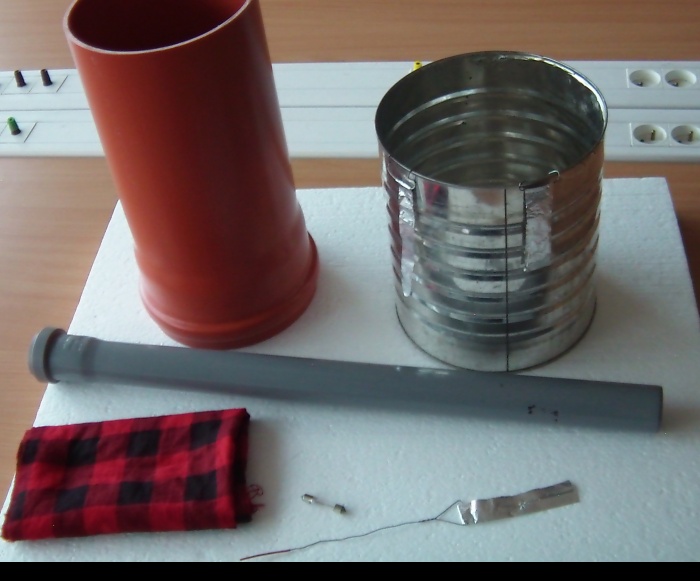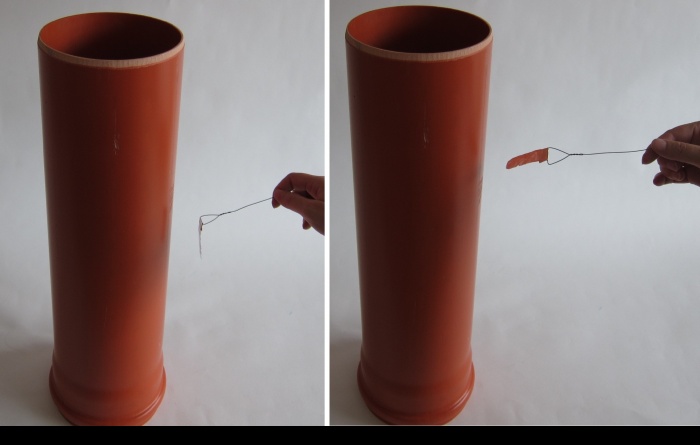Charge Distribution on Conductor and Insulator
Experiment number : 2120
Goal of experiment
The experiment compares the differences in charge distribution on a conductor and on an insulator of similar size.
Theory
In a conductor, the charge can move freely. If we charge a conductor, the charge is redistributed evenly (on a regular body). If we charge a can, the entire outer surface is charged uniformly, there is no charge inside the can (hollow conductor) because the matching charges are repelled: trying to get as far away as possible..
In an insulator, the charge cannot be redistributed. If we charge an insulator, the charge will remain only at the spot that we charged. Charging multiple areas on an insulator will result in all these areas being charged, though the space between them will not be charged.
The same applies when discharging – if we touch a single spot on the conductor, we discharge it all. In the case of the insulator, however, we will only discharge a very small space near the point of contact.
Tools
Plastic can and aluminium foil strip on a holder
A sewer pipe is used as an insulator in this experiment. Unlike most commonly used plastics, it is not antistatic, so it can be easily charged. In addition, its shape and size are similar to the can of stewed fruit that is commonly used for electrostatic experiments.
An aluminium foil on a holder made out of a piece of wire (see Figure 2) is used to check if the can/sewer pipe is charged at a given area.
The detection of charge on the “plastic can” show the following figures:
Procedure
Place the can and the sewer pipe on the insulating pad side by side. Do the following:
- Charge the can and the sewer pipe in one place.
- Charge the can and the sewer pipe in several places.
- Touch the can and the pipe in one place with your hand or a glow lamp.
- Charge the pipe in one place and test the charge distribution with the aluminium foil after a few minutes.
In all cases, use the aluminium foil on the holder (in case of the sewer pipe) or suspended aluminium foils (in the case of the can) to determine the distribution of charge on the can and the pipe.
Sample result
The sample result of the experiment is illustrated in the video below:
Technical notes
- The sewer pipe is a very good insulator, so it stays charged for a long time. To discharge it, wipe it with a wet cloth and let it dry.
- To charge a “plastic can”, it is enough to wipe it with a piece of flannel. It is better to charge the can with a charged plastic rod, since touching it with flannel could cause it to discharge.
Learn more
The experiment was based on research showing that students have a good idea about charge distribution on a can, but often have problem with charge distribution on an insulator. A large number of students believe that if we charge one place on the insulator, the charge will disappear after a while, or the charge will distribute across the surface of the insulator. The experiment should serve to give students a better understanding of both the term insulator and the behaviour of charge on an insulator.










